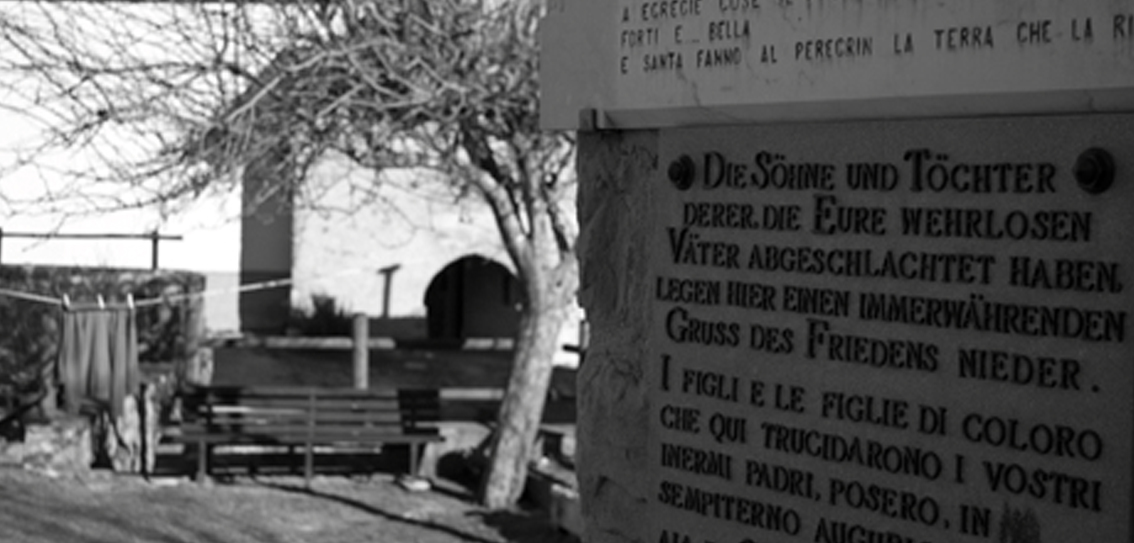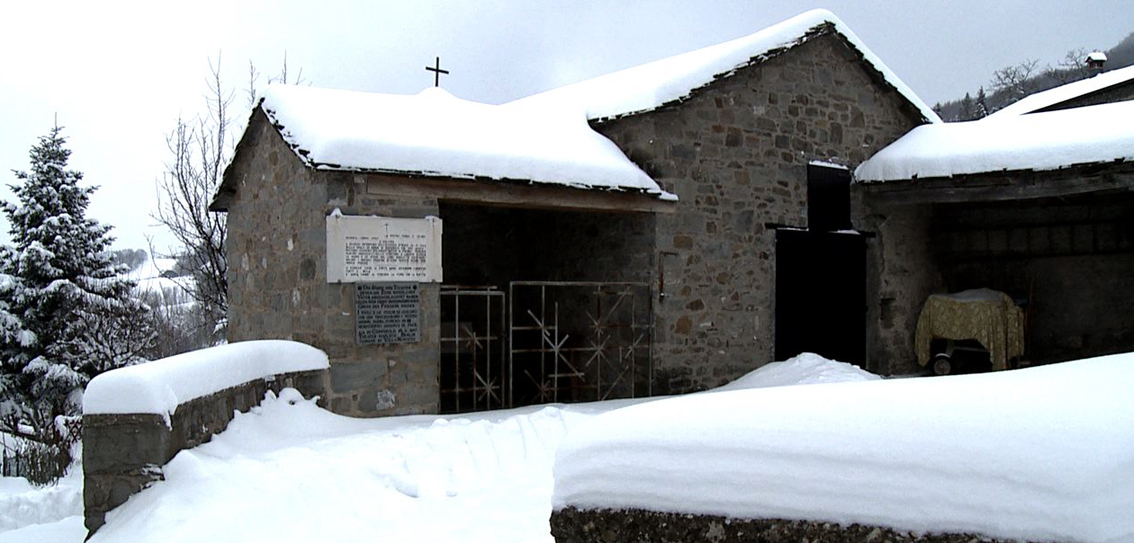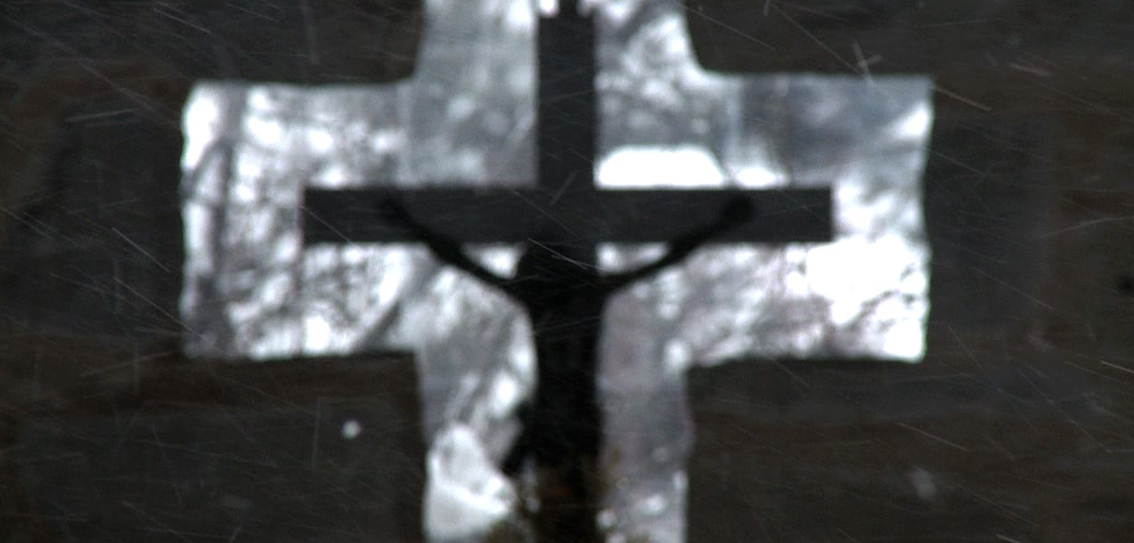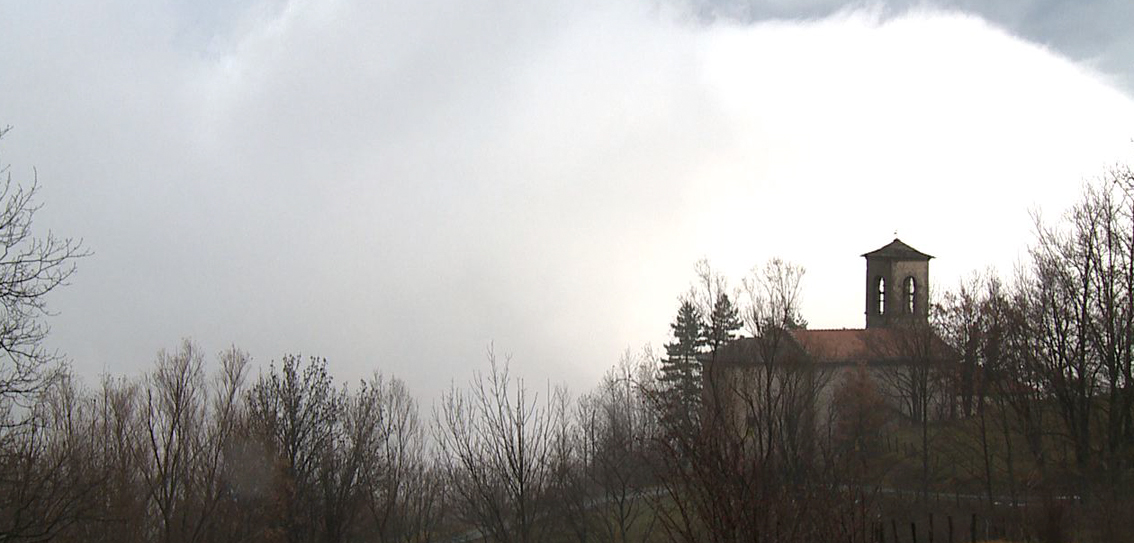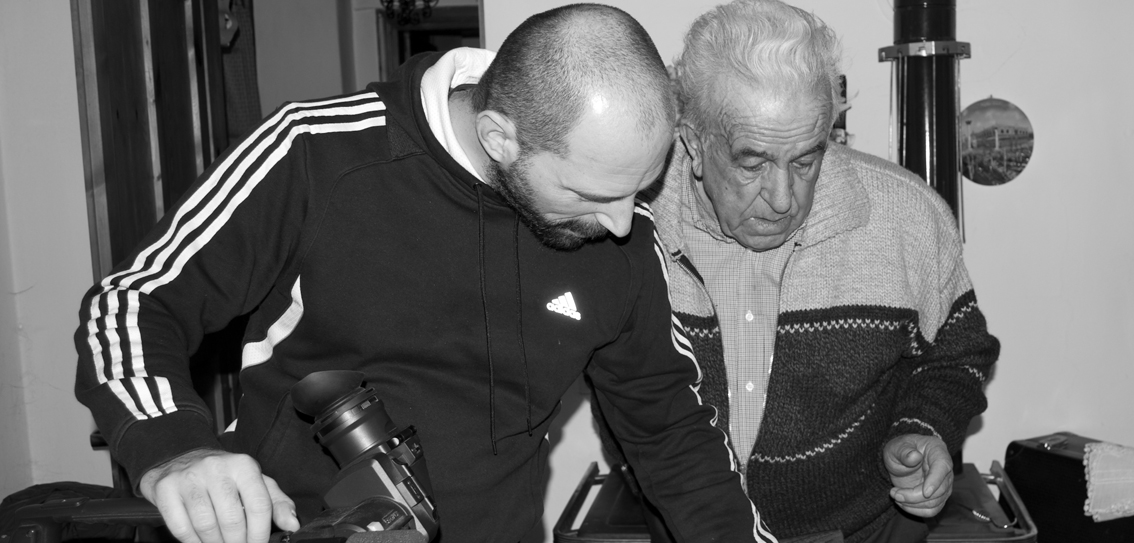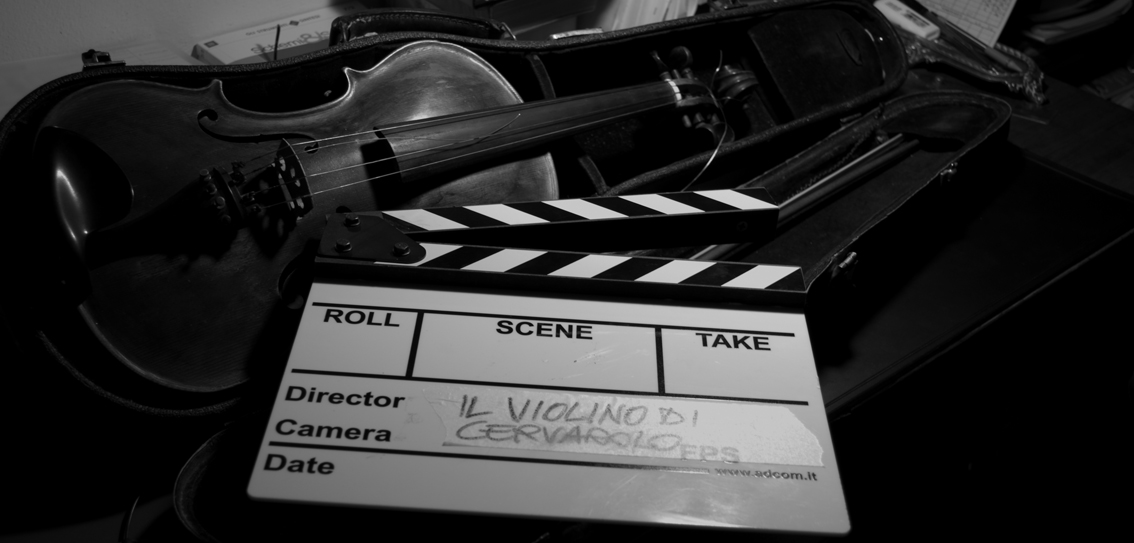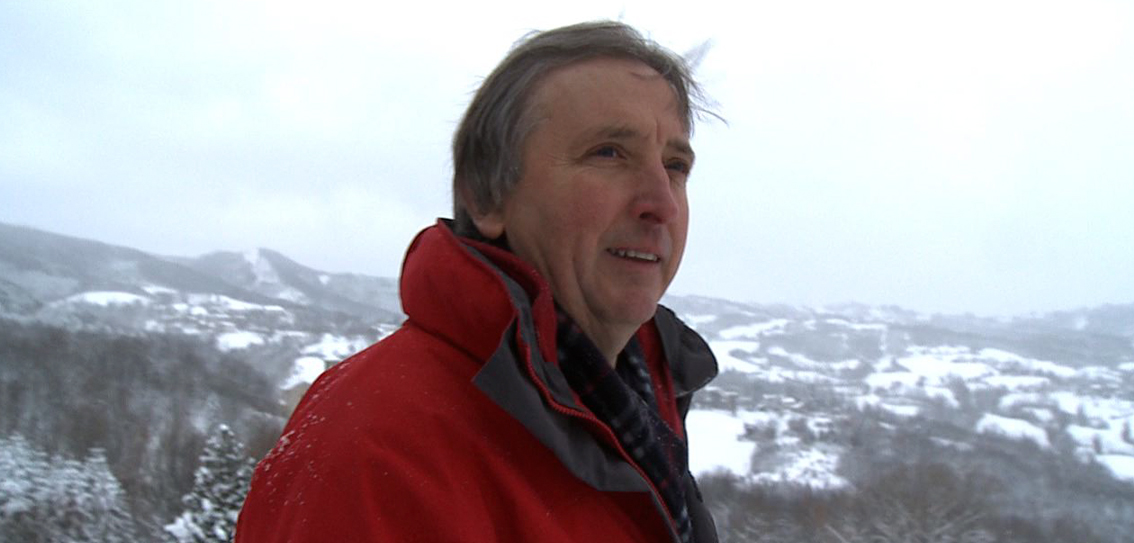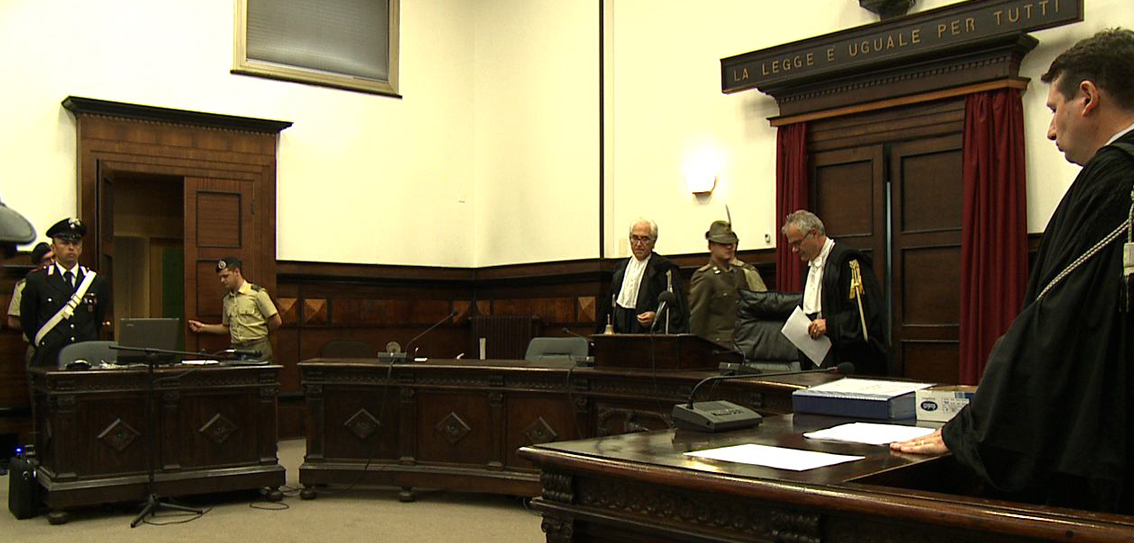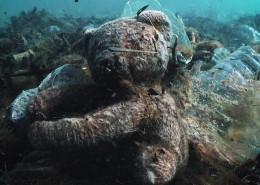
The film
THE VIOLIN OF CERVAROLO
by Nico Guidetti and Matthias Durchfeld
2012 – HD- 16/9 – dur. 1×75′
“Here inside there’s the story of a war, and inside the story of the war there’s the story of a massacre, and inside the story of the massacre there’s the story of a trial, and inside the story of the trial there’s the story of a button, and the story of the button is what makes you cry.” Paolo Nori
Credits
Italy, 2012, HD, 1X75′
Subject
Nico Guidetti and Matthias Durchfeld
Sceenplay
Nico Guidetti and Giusi Santoro
Cinematography
Nico Guidetti and Nello Chiari
Colorist
Andrea Dalpian
Editing
Nico Guidetti
Editing Supervisor
Giusi Santoro
Sound
Riccardo Nanni
Traditional Musics played by
Emanuele Reverberi
Violin
Emanuele Reverberi
Accordion
Paolo Simonazzi
Produced by
POPCult
Istoreco
Mediavision
More info
More info: http://www.istoreco.re.it
Almost seventy years after the Nazi massacre of Cervarolo, that is a small community in Italian Reggio Emilia Apennines, Italo Rovali that lost his grandfather and uncle in that occasion, investigates among his memories searching the responsables for that massacre. Due to its lengthy investigation with a group of attorneys he is finally able to open the court process.
On 15th March 1944 it happened the first major raid in place in the mountains with a mixed of Nazi and fascist contingent troops. The goal was to hunt down and exterminate the rebels. The battle that ensued in Cerré Sologno ended unexpectedly in a partisan victory, but with deaths on both sides.
Some Nazi and Fascist prisoners were later executed by partisans. The German reprisal was swift. On 18th March 1944, in fact, the Hermann Goering Armored Division, assisted by local fascist troops, began a series of massacres of civilians in the Apennines of Modena and Reggio Emilia.
A tragedy that has forever marked the life of Italo, whose memories and ties emerge unexpectedly during the process. Including the amazing story of his father’s violin.
The violin of Cervarolo now gets free from history and from memory to merge to actuality. Not only for the judgment on the process of Verona 6th July 2011, but also for the ruling of the International Court of Justice on 3rd February 2012, which accused Italy of violating its obligations under international law against accepting requests of compensation from Germany in Berlin for the victims of Nazi war crimes. “The Court considers that the action of the Italian courts to deny immunity constitutes a breach of its obligations towards the German state,” said Judge Hisashi Owada during a public hearing. For the German Foreign Minister Guido Westerwelle, the judgment provided “an important clarification in the interests not only of Germany but of the international community at all”.
NOTE OF ARTISTIC INTENT
As it often happens in Italy, wherever you were born there is a dramatic traces left by the last war. In the place where we live, the province of Reggio Emilia, the partisans resistance was a “serious stuff” and left many traces of this kind, from Cervi brothers to all the “painful stones” scattered along our roads.
However, that of Cervarolo, is particularly important, either for the mysterious isolation of the place, hidden in the valleys of the Apennines, both for the fact that it was a retaliation against civilians. What is striking in the case of Cervarolo is the fact of the resigned inevitability for so long of those that were affected. As it were a side effect of the passage of history, before which, too often, we feel totally helpless. It’s also more true if who has to pay are the last people as peasants and shepherds always resigned to fight a not very generous land for the mere survival.
Over the years everyone became part of history conspiracy of silence, so much that the identification of real perpetrators of this massacre had been gradually lost. Soon different versions began to circulate and there are even those who pointed the partisans for the massacre. In short, a disservice made for the memory.
How to tell this story? What’s the structure? At the beginning in fact, speaking around 2008, Matthias and I just wanted to tell the incredible story of the violin that belonged to Virgilio Rovali. This story was beautiful in itself, but acquired a real meaning only within the larger narrative of the massacre of Cervarolo. And the problems started there, because at this point we felt that the story would have risked taking too vague contours, losing its center of gravity and feared to stop. So we put aside the project and waited. A year later, we discovered, quite unexpectedly that in a bit at the military court in Verona, the boot process for that massacre would take and we realized that it would provide the ideal setting to the story – with lots of lawyers, judges, witnesses and consultants – and the narrative rhythm that we wanted.
At that point, only those who acted as a liaison between the process and history of the violin were missing. And the choice could only fall on Italo Rovali, the son of the violinist. Obviously we knew already Italo, because he was the one to tell the story of his father’s violin. He had, however, “forgotten” to tell us that since 2005, because he is a mountain stubborn, he had been working to open the case of the massacre in his town and to sent to trial the Nazi officials who planned it.

